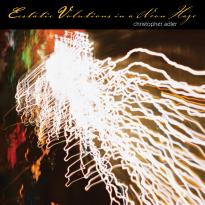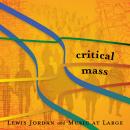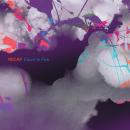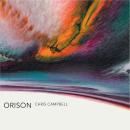Ecstatic Volutions in a Neon Haze
Ecstatic Volutions in a Neon Haze
San Diego, CA
| Ecstatic Volutions In a Neon HazeiTunes Artist's PageiTunes Album Page | |||
|---|---|---|---|
| Song Title | Time | Price | |
| 1. | Iris | 16:24 | |
| 2. | Signals Intelligence | 05:43 | $0.99 |
| 3. | Liber Pulveris | 04:20 | $0.99 |
| 4. | I Want to Believe | 14:15 | |
| 5. | Ecstatic Volutions In a Neon Haze | 16:49 | |
Christopher Adler relishes the ecstasy of the groove, and he finds it everywhere. From the algorithmic severity of the percussion solo “Signals Intelligence” to the ecstasy of free improvisation bursting from “I Want to Be- lieve,” Adler distills a relentless rhythmic drive through his passions for minimalism, math- ematics and Southeast Asian traditions.
This recording documents five of Adler’s newest compositions.
“Iris” is a tightly woven fabric of metrical com- plexity informed by the structures of Southeast Asian ensemble musics. “Liber Pulveris” freezes the fire of improvisation into frighteningly complex notation. And “Ecstatic Volutions in a Neon Haze” is a tour de force of chamber- funk.
These five works are performed by intrepid performers from across the United States. The bicoastal ensemble NOISE includes champions of new music Lisa Cella (flute) and Colin McAllister (guitar), red fish blue fish veteran Morris Palter (percussion) and complexity sa- vant Franklin Cox (cello). Chicago-based per- cussionist Robert Dillon and Colin McAllister perform solos, and, on piano, Adler joins the chamber rock group pulsoptional from North Carolina for the title track, and multi-instrumentalist Alan Lechusza to tackle the epic composition “I Want to Believe.”
Christopher Adler's artistry as composer, performer and improviser has been heard from Carnegie Hall, to San Diego jazz bars and rural Thai villages. His compositions are played by groups such as the Silk Road Ensemble and red fish blue fish and have been released on Tzadik and Art of the States. As pianist and composer-in-residence with NOISE, he co- organizes the soundON Festival of Modern Music and champions new music from around the world. Since 2000 he has performed and recorded fearless free improvisation in the Alan Lechusza/Christopher Adler Duo, and he is an Associate Professor of Music at the University of San Diego.
ZOOKEEPER ONLINE
Modern classical stuff: Accessible but challenging; pleasant; intellectual without feeling cold. A variety of settings: two solo performances, a duet, two small chamber groups. Some minimalist Reich/Glass influence in the longer, group-driven pieces (1,5), where long rhythms play out that are similar but not quite identical. Every track is really good. Don't be scared of the long ones. 1- (16:25) Gentle and fast percussiveness, in Philip Glass-ian waves. Flute and guitar it a soft touch, pillowy. The rhythm changes frequently but creates a uniform, monochrome feel. Second half opens up more, ending with some quick-paced pastoral melody. 2- (5:45) Solo percussion, cool! A fast, clocky sound in complex rhythms (of course). Played on ceramic tiles. 3- (4:18) Acoustic guitar, all fast and jumbly and stumbling over itself 4- (14:14) Sax & piano, perky and jazzy, good fast pace. After 4 minutes, gets cooler and more studious, still fairly fast. Gets pretty crazy near the end. Yes, the title's from The X-Files. 5- (16:39) Long oboe lines over a group pulse, a bit jingly, definitely a modern-classical sound but with an art-jazz feel. Starts going offcenter, tone-wise, after piano enters in the second half. Final 3 minutes finally break form for some new, exciting rhythms. Overall bright, but not in a hurry; turns out to be an exercise similar to Terry Riley's "In C."
by Craig Matsumoto
AMERICAN RECORD GUIDE
In his notes Adler says each work is based on creating grooves and "Ecstatic Volutions in a Neon Haze" accomplishes that end to the greatest degree...
by Lamper
PHILIP CLARK
...Christopher Adler is interested in the "ineffable resonance between sonic rhythm and bodily movement" which means there is meaning beyond patternings... "I Want to Believe" for soprano saxophone and piano evolved from Adler's improvisations with saxophonist Alan Lechusza, which became fixed on paper and were then opened up for improvisation. Adler's left hand plays with implausibly Nancarrowesque complexity as Lechusza piles intelligent lines on top; then the grooves splinter, springing the musicians into an erratic free-for all. "Signals Intelligence" is a percussion piece that attempts to rationalize a level of complexity beyond our unusual comprehension. It can be played on any instrument and Robert Dillon chooses six beautifully resonant ceramic tiles through which to realize Adler's demands. "Iris" finds common cause between early minimalism and gamelan- without selling either short.
by The Wire Review
WWW.GAPPLEGATE.COM
Christopher Adler is one of bright lights on the West Coast today. The Minimalist style of modern concert music has been a large contributor to the new music heard in the past 30 years, sometimes to mixed results. The key to Adler and his success in this idiom is probably contained in the classic idea of VARIATIONS. This can be opposed to the “process” favored by the early work of Steve Reich and others. With Mr. Adler there is periodicity and repetition, but the forms of change in his music seem to be driven by a non-mechanical musical sensibility not always at the forefront in other similar musics. How can the set of transformations undergone in any particular piece be understood? Adler’s solution is always to create musical interest by letting the variations follow an inspirational path guided by pure invention. What could be a snooze becomes just the opposite. The five pieces represented on this disk vary also in the ensemble colors available with the instrumentation at hand. The larger group pieces, “Iris” for flute, guitar, cello and marimba, and “Ecstatic Variations” for acoustic and electric guitars, oboe, bassoon, and piano, create sound color-texture and nicely wrought, idiomatically conceived parts that mesh together for a very interesting aural experience. But this is no less true of the smaller ensemble writing. For example the long standing duet of Adler on piano and Alan Lechusza on winds, here soprano sax, puts in one of the more exciting performances of the disk, “I Want to Believe.” There is a jazz-like attention to velocity and color and a drive to the music that engages. The title cut stands out for me as well in its effective use of guitars and its ability to unveil an arsenal of musical ideas in a relatively short time period. This is music as essential as it is essentialist, no doubt as interesting to play as it is to hear. Listen and you’ll learn as well as enjoy. You might even get the urge to dance.
by Grego Applegate Edwards



